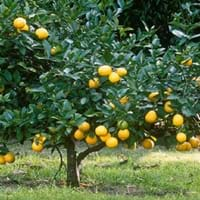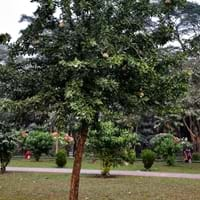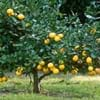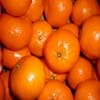Life Span
Perennial
Perennial
Origin
Asia
Bangladesh, India, Pakistan, Sri Lanka, Tropical Indomalaya
Types
Avalon Lemon, Bears Lemon, Buddha's Hand, Bush Lemon, Citron
Not Available
Number of Varieties
Not Available
Habitat
Mixed deciduous forest, Tropical regions
Dry areas
USDA Hardiness Zone
9-12
Not Available
AHS Heat Zone
12-1
Not Available
Sunset Zone
H1, H2, 8, 9, 12, 13, 14, 15, 16, 17, 18, 19, 20, 21, 22, 23, 24
Not Available
Habit
Oval or Rounded
Not Available
Flower Color Modifier
Bicolor
Not Available
Fruit Color
Yellow, Lemon yellow
Greyish Brown, Light Green, Not Available
Leaf Color in Spring
Green
Green
Leaf Color in Summer
Green
Dark Green
Leaf Color in Fall
Green
Green
Leaf Color in Winter
Light Green
Gray Green
Plant Season
Spring, Summer, Fall, Winter
Autumn
Sunlight
Full Sun, Partial Sun
Full Sun, Partial Sun
Growth Rate
Medium
Medium
Type of Soil
Loam, Sand
Rich
The pH of Soil
Acidic, Neutral
Acidic, Neutral
Soil Drainage
Well drained
Well drained
Bloom Time
Indeterminate
Late Fall
Tolerances
Drought
Drought
Where to Plant?
Container, Ground
Ground, Pot
How to Plant?
Seedlings
Budding, Layering, root cutting, Seedlings
Plant Maintenance
Medium
Low
Watering Requirements
Keep the ground moist but not water-logged, occasional watering once established
Do not water excessively
In Summer
Lots of watering
Lots of watering
In Spring
Moderate
Moderate
In Winter
Average Water
Average Water
Soil pH
Acidic, Neutral
Acidic, Neutral
Soil Type
Loam, Sand
Rich
Soil Drainage Capacity
Well drained
Well drained
Sun Exposure
Full Sun, Partial Sun
Full Sun, Partial Sun
Pruning
Generally pruned to waist height, pruning needed for strong structure, Remove damaged leaves, Remove dead branches, Remove dead leaves
Prune after harvesting, Remove dead or diseased plant parts
Fertilizers
All-Purpose Liquid Fertilizer, Doesn't require fertilization when grown in rich soil
for fruiting plants, use high phosphorous content fertilizer
Pests and Diseases
Aphids, Grasshoppers, Leafminers, Red blotch, Rust, Snails
Not Available
Plant Tolerance
Drought, Drought and Salt
Drought
Flower Petal Number
Single
Single
Fragrant Bark/Stem
Yes
No
Foliage Texture
Medium
Medium
Foliage Sheen
Glossy
Matte
Attracts
Birds, Butterflies
Not Available
Allergy
Diarrhea, Hyperacidity, Sore Throat, Whooping Cough
Gastric
Aesthetic Uses
Cottage Garden
Not Used For Aesthetic Purpose
Beauty Benefits
Glowing Skin, Maintains teeth healthy, Making cosmetics, Nourishes scalp, Perfumes, Skin inflammation
Good Cleanser
Environmental Uses
Air purification, Fixes Nitrogen, Insect Repellent, soil stabilisation
Not Available
Medicinal Uses
Acne, Antibacterial, Antirheumatic, Appetizer, Bone strength, Digestion problems, Hangover, Healthy teeth, Nutrients, Obesity, Oral health, Skin irritation
Blood cleanser, Diabetes, Ear ache, Energy, Kidney problems, Liver Protection, Malaria, Respiratory Disorders, scurvy, Snakebite
Part of Plant Used
Bark, Fruits, Leaf Stalks, Leaves
Fruits
Other Uses
Air freshner, Biomass for fuel, Can be made into a herbal tea, Leaves are used as mosquito repellent, Making Perfumes, Preferably used as black tea, Used as a nutritious food item
Used As Food, Used for its medicinal properties
Used As Indoor Plant
No
No
Used As Outdoor Plant
Yes
Yes
Garden Design
Container, Edible, Fruit / Fruit Tree, Hedges, Houseplant, Mixed Border, Topiary / Bonsai / Espalier, Tropical
Edible, Fruit Tree
Botanical Name
CITRUS limon
Limonia acidissima
Common Name
Lemon
Wood apple, monkey fruit, curd fruit
In German
Citrone or Limone or Zitrone
Indischer Holzapfel
In French
Citron or Citronnier
Kawista
In Spanish
Limón or Limonero
Kawista
In Greek
Λεμόνι [Lemóni]
γλυκό ασβέστη
In Portuguese
Limão
Limonia
In Polish
Cytrynowy
Feronia słoniowa
In Latin
Limon
dulcis ad cinerem
Phylum
Magnoliophyta
Magnoliophyta
Class
Magnoliopsida
Magnoliopsida
Order
Sapindales
Sapindales
Clade
Rosids
Angiosperms, Eudicots
Tribe
Not Available
Citreae
Subfamily
Not Available
Aurantioideae
Season and Care of Lemon and Wood Apple
Season and care of Lemon and Wood Apple is important to know. While considering everything about Lemon and Wood Apple Care, growing season is an essential factor. Lemon season is Spring, Summer, Fall and Winter and Wood Apple season is Spring, Summer, Fall and Winter. The type of soil for Lemon is Loam, Sand and for Wood Apple is Rich while the PH of soil for Lemon is Acidic, Neutral and for Wood Apple is Acidic, Neutral.
Lemon and Wood Apple Physical Information
Lemon and Wood Apple physical information is very important for comparison. Lemon height is 120.00 cm and width 150.00 cm whereas Wood Apple height is 800.00 cm and width 900.00 cm. The color specification of Lemon and Wood Apple are as follows:
Care of Lemon and Wood Apple
Care of Lemon and Wood Apple include pruning, fertilizers, watering etc. Lemon pruning is done Generally pruned to waist height, pruning needed for strong structure, Remove damaged leaves, Remove dead branches and Remove dead leaves and Wood Apple pruning is done Prune after harvesting and Remove dead or diseased plant parts. In summer Lemon needs Lots of watering and in winter, it needs Average Water. Whereas, in summer Wood Apple needs Lots of watering and in winter, it needs Average Water.





